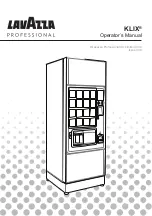
Frame Relay switches and/or the network provider. Frame Relay offers high
performance, multiple access, and high reliability. This combination makes
Frame Relay very well suited for LAN-to-LAN internetworking.
High performance or, rather, high throughput with low latency (delay
introduced by the network), is achieved through a variety of factors. High-
speed circuits are used for both Frame Relay access links as well as inter-
switch trunks. Trunks in a Frame Relay network are typically
very-high-speed digital links. In the U.S., T3 links (45 Mbit/s) are often used
for this purpose.
With Frame Relay, data multiplexing occurs at the lowest possible layer—the
data-link layer. Frame Relay standards do not specify a network layer. This
reduces the complexity of Frame Relay implementations and helps to im-
prove performance.
In contrast to X.25, Frame Relay networks do not provide error correction or
flow control. Again, this reduces complexity and improves performance.
Note that Frame Relay networks can detect errors. However, when frame
errors occur, the frames in error are simply discarded by the network. The
systems that originated the packets must retransmit the packets that were
discarded (which typically occurs at the transport layer in a system’s
networking software).
Frame Relay allows for the transmission of large, LAN-sized frames (1600
bytes at minimum). This means that network software on both hosts and
routers does not have to segment and reassemble packets. Frames may be
up to 4500 bytes on some Frame Relay networks.
Frame Relay networks provide multiple access. Thus, many devices can
attach to the same network and communicate through data-link layer
addresses—similar to the way systems communicate on LANs. In contrast,
private (point-to-point) leased lines offer access only at each end point.
High reliability is achieved through the use of reliable digital links, switching
nodes with built-in redundancy, and a meshed network design where
alternative data paths are available should a link or switch fail.
Frame Relay Physical Interface
Access to an Frame Relay network is usually provided through a digital
circuit (local loop) from the Frame Relay carrier’s point of presence (POP)
to the customer premises. This circuit is terminated at the customer prem-
ises with a DSU/CSU. The physical interface on the DSU/CSU to which the
router connects is a standard interface such as V.35, RS-449 (V.36), or X.21.
Linking Up with Frame Relay
Overview
3-86
Summary of Contents for 600 Series
Page 1: ...Hewlett Packard Series 200 400 and 600 Routers HP Routing Services and Applications ...
Page 4: ......
Page 5: ...1 Product Notes ...
Page 6: ...Features of HP Routers Architecture and Technology Branch Office Routing Product Notes 1 2 ...
Page 38: ...Architecture and Technology Software Control Path Architecture 1 34 ...
Page 52: ...Branch Office Routing Future Directions 1 48 ...
Page 53: ...2 Routing Services Notes ...
Page 106: ...Bridging Service Traffic Prioritization 2 54 ...
Page 158: ...Novell IPX Routing Service NetBIOS Protocol Support 2 106 ...
Page 194: ...Data Compression for WAN Links Conclusion 2 142 ...
Page 195: ...3 Application Notes and Case Studies ...
Page 224: ...Improving Network Availability Application Recovery 3 30 ...
Page 234: ...ISDN Wide Area Network Design Dry Creek Joint Elem School District Performance 3 40 ...
Page 316: ......
















































